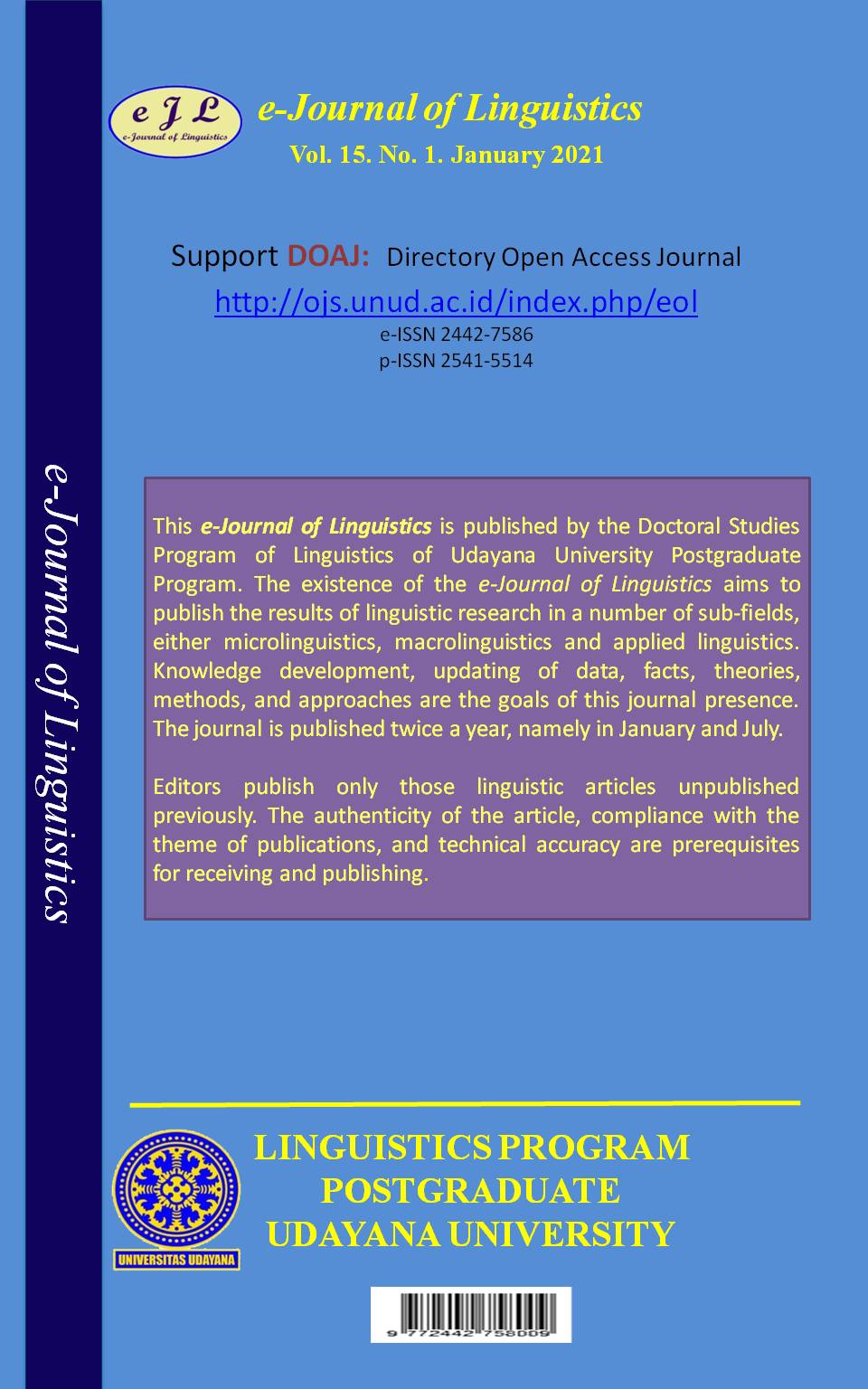Description of Phonology, Characteristics, and Determination of the Origin Language of Waisika
Abstract
This study aims to describe the Waisika language carried out in the Northeast Alor sub-district based on the observation point, which was the object of research. This research uses quantitative and qualitative approaches. In diachronic research methods, there are two main methods in facilitating the direction of research, namely quantitative methods and qualitative methods. Application of minimal pairing procedures and similar environments, it can be found that all vocoids sound in Waisika is vocal segments /a, i, u, e, o/. Application of minimal pairing procedures and similar environments, it can be found that all contoid sounds are consonant segments [p, b, mb, t, nt, d, k, g, nd, h, s, m, n, N, Nk, l, r, w]. Five vowel phonemes, which are found to have complete distribution at the front, central, and back of the morpheme. The phoneme /mb/, /nt/, /d/, /k/, /nd/, /r/, /w/ only exists in the initial and middle position of words. The phonemes /Nk/ are only in the central position of words. The phonemes /N/ are only in the central and back positions.
Downloads
References
Anggayana, I. A., Budasi, I. G., & Kusuma, I. W. (2019). Social Dialectology Study of Phonology in Knowing English Student Speaking Ability. The Asian EFL Journal, 25(5.2), 225-244.
Anggayana, I. A., Suparwa, I. N., Dhanawaty, N. M., & Budasi, I. G. (2020). Lipang, Langkuru, Waisika Language Kinship: Lexicostatistics Study in Alor Island. International Journal of Psychosocial Rehabilitation, 24(4), 301-319. doi:https://doi.org/10.37200/IJPR/V24I4/PR201010
Budasi, I. G., & Anggayana, I. A. (2019). Developing English for Housekeeping Materials for Students of Sun Lingua College Singaraja-Bali. The Asian EFL Journal, 23(6.2), 164-179.
Fromkin, V & Ladefoged, P (1981). Early views of Distinctive Features. Towards a history of phonetics, eds. R.A. Asher and E.J. Henderson, 3-8. Edinburgh: Edinburgh University Press.
La Ino. (2013). Protobahasa Modebur, Kaera, dan Teiwa Bahasa kerabat Non-Austronesia di Pulau Pantar Nusa Tenggara Timur. Disertasi: Universitas Udayana.
O’Grady, William, Michael Dobrovolsky, And Mark Aronoff, Eds. (1989) Contemporary Linguistics. St, Martin’s Press New York.
Odden, D. (2013). Introducing Phonology. United States of America, New York: Cambridge University Press.
Pike, K. L. (1948). Tone languages. University of Michigan Publications in Linguistics, 4. Ann Arbor: University of Michigan Press.
Poedjosoedarmo, S. (1978). Interferensi dan Integrasi dalam Situasi Keanekabahasaan, Jakarta : Pusat Pembinaan dan Pengembangan Bahasa.
Schane, Sanford A. (1992). Fonologi Generatif. Jakarta: Summer Institute of Linguistics.
Sudipa, I. N., Aryati, K. F., Susanta, I. P. A. E., & Anggayana, I. W. A. (2020). The Development of Syllabus and Lesson Plan Based on English for Occupational Purposes. International Journal of Psychosocial Rehabilitation, 24(4), 290–300. https://doi.org/10.37200/IJPR/V24I4/PR201009

This work is licensed under a Creative Commons Attribution 4.0 International License











